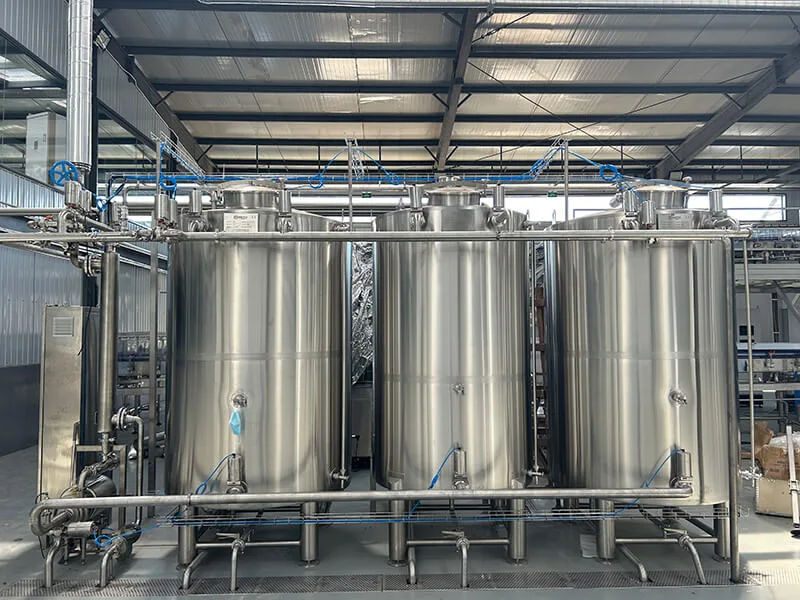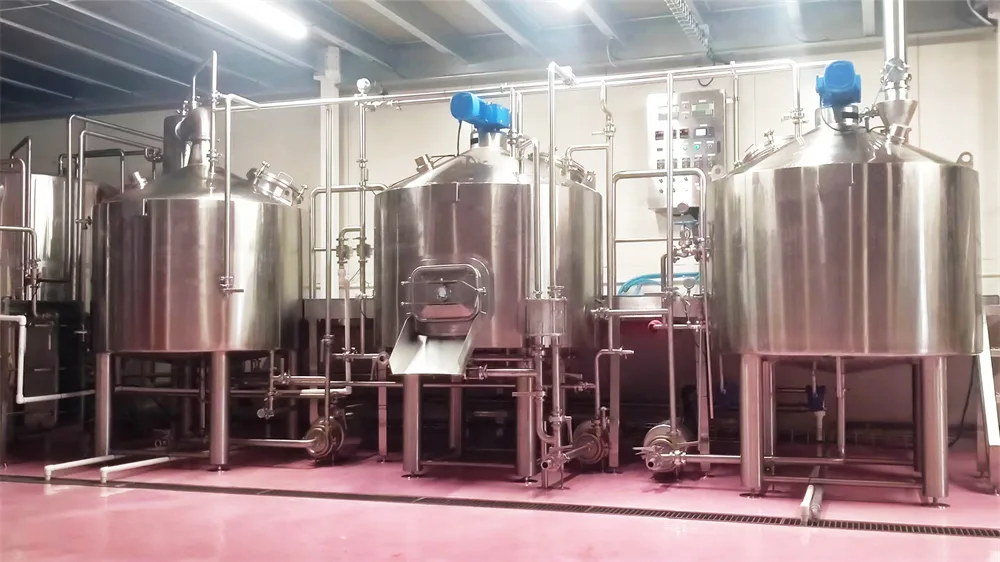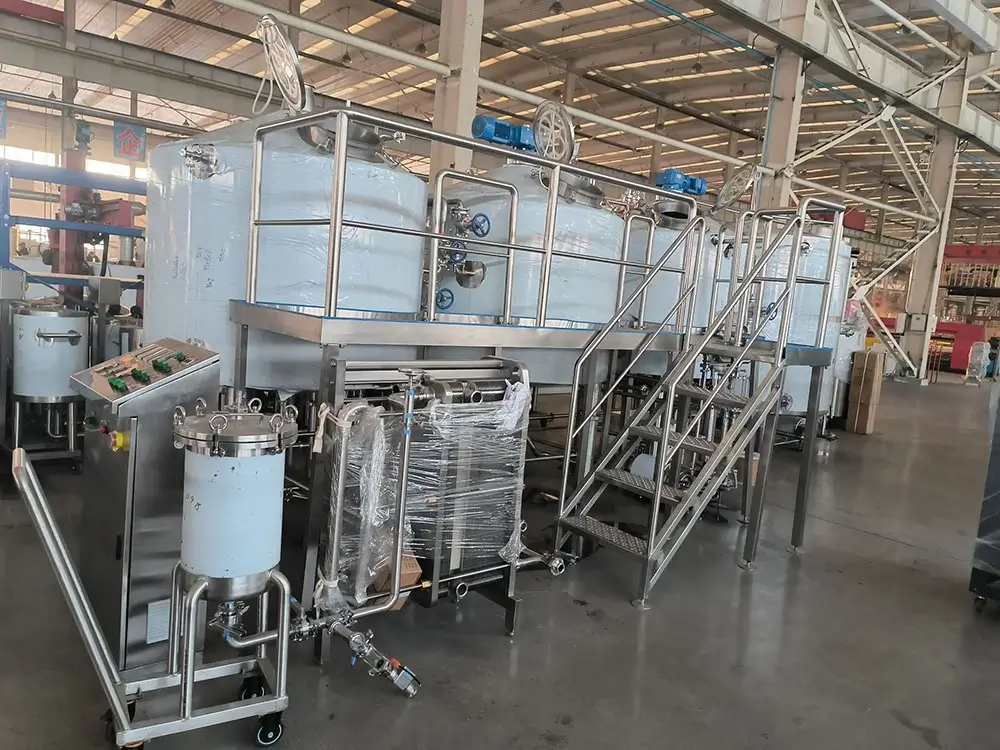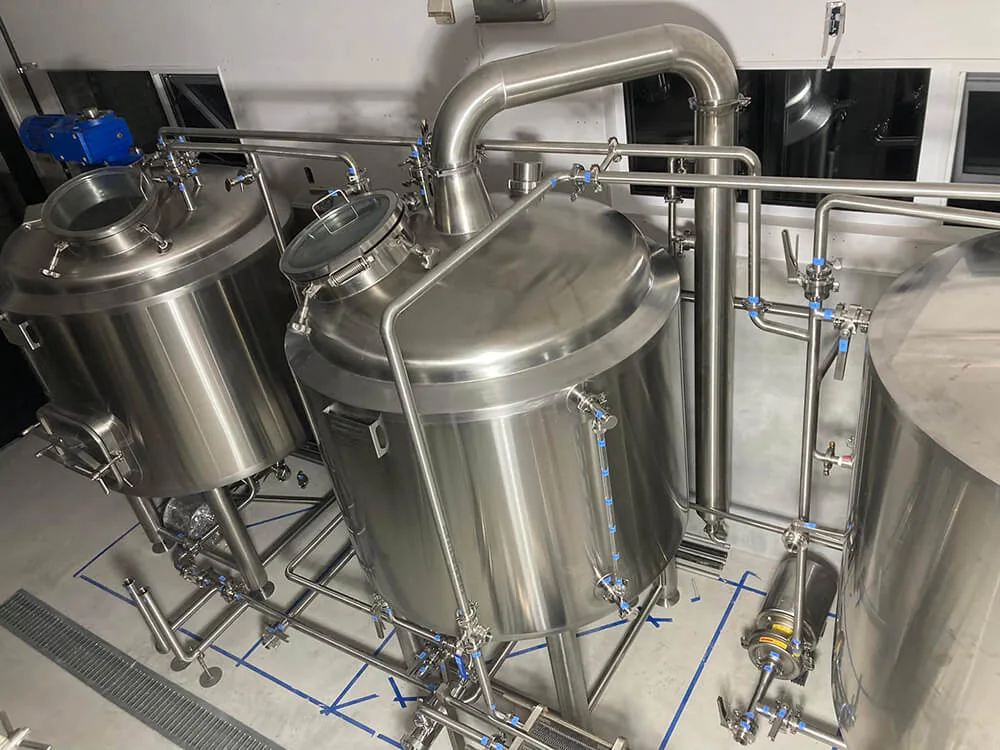In modern breweries, maintaining high hygiene standards is essential for producing quality beer. The Clean-In-Place (CIP) system is an automated cleaning solution that sanitizes the internal surfaces of tanks, pipes, and brewing vessels without disassembly.
A typical CIP system includes cleaning tanks, pumps, heat exchangers, valves, and a control panel to regulate cleaning agents, temperature, and flow. This fully automated process ensures consistent cleanliness, prevents contamination, and minimizes downtime and labor costs.
By integrating a CIP system, breweries can enhance efficiency, ensure product safety, and maintain the desired taste and quality of their beer — all while complying with strict hygiene standards.
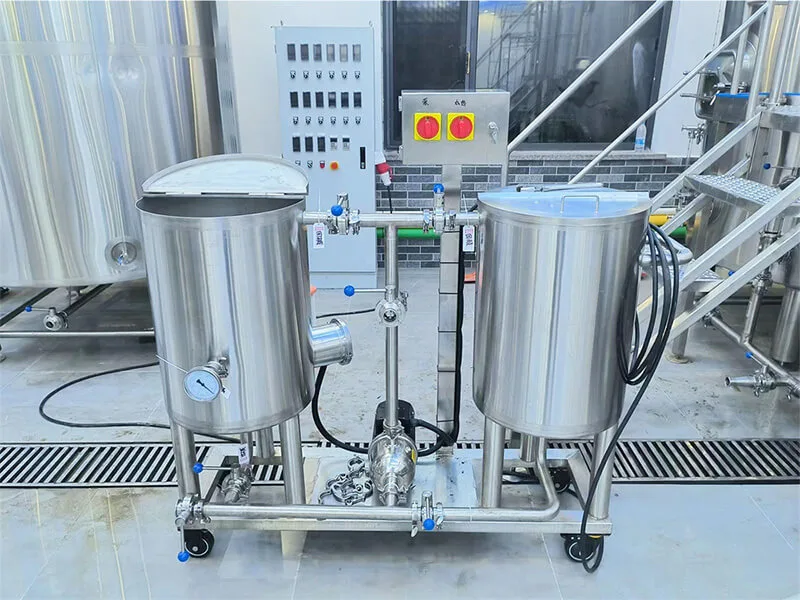
Components Of A CIP System
A typical CIP system includes several essential components working together for efficient, automated cleaning:
- CIP Tanks – Store cleaning agents such as caustic, acid, and rinse water.
- Pumps – Circulate cleaning solutions through all pipelines and vessels.
- Heat Exchangers – Maintain optimal cleaning temperatures for effective sanitation.
- Valves & Sensors – Control flow and monitor key parameters like temperature, pressure, and flow rate.
- Control Panel – Central unit for setting, monitoring, and managing cleaning cycles.
Together, these components ensure thorough, consistent, and contamination-free cleaning without manual disassembly—saving time, improving hygiene, and maintaining product quality in brewery operations.
The Importance Of CIP In Brewing
A CIP system is essential for maintaining hygiene, efficiency, and quality in modern brewing. By automatically cleaning and sanitizing tanks, pipes, and vessels, it removes residues and microorganisms that could affect flavor, aroma, and safety, ensuring every batch meets the brewery’s quality standards.
CIP systems also standardize cleaning cycles, guaranteeing consistency from batch to batch and helping breweries comply with strict hygiene regulations through precise, documented cleaning records.
Beyond cleanliness, CIP enhances operational efficiency by minimizing downtime and manual labor, allowing production to continue smoothly. It also extends equipment lifespan by preventing residue buildup and corrosion.
In short, an efficient CIP system helps breweries produce consistent, high-quality beer, protect their equipment investment, and maintain compliance and efficiency across operations.
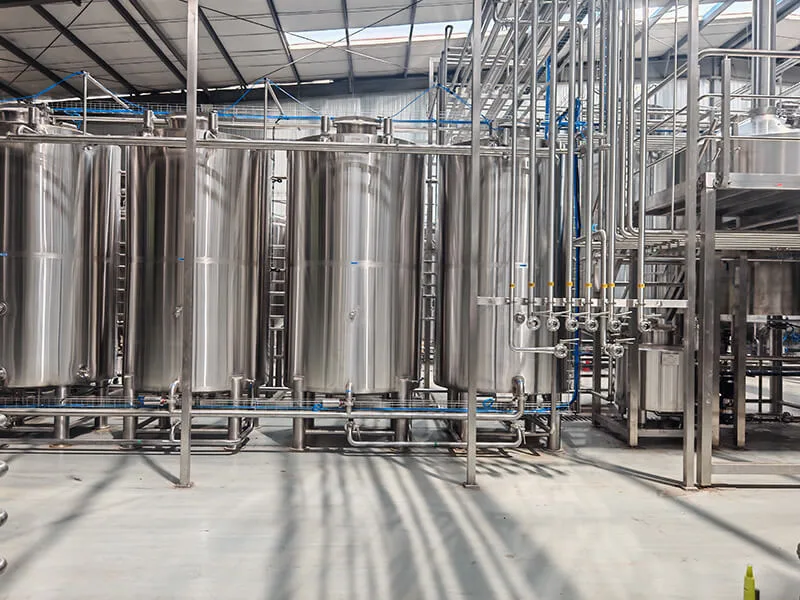
The CIP Process in Detail
The Clean-In-Place (CIP) process is a systematic cleaning method that allows brewery equipment to be cleaned and sanitized without disassembly. It ensures the removal of residues, microorganisms, and contaminants to maintain the highest hygiene standards.
1. Pre-Rinse
The process starts with a water rinse to remove loose debris and product residues. Cold or warm water is used to reduce organic load and prepare surfaces for effective chemical cleaning.
2. Caustic Wash
A heated sodium hydroxide (NaOH) solution circulates through the system to dissolve organic materials such as proteins, sugars, and fats, ensuring complete removal of organic residues.
3. Intermediate Rinse
Clean water rinses out residual caustic solution to prevent neutralization of the acid wash. This step ensures effective transition between cleaning phases and avoids cross-contamination.
4. Acid Wash
An acid solution—typically phosphoric or nitric acid—removes mineral scale and beer stone deposits. This preserves stainless steel surfaces, prevents corrosion, and reduces microbial growth potential.
5. Final Rinse
Pure water flushes out any remaining acid or minerals, leaving equipment clean, neutral, and ready for sanitization. This step also cools the system in preparation for the final stage.
6. Sanitization
A sanitizing agent such as peracetic acid or chlorine dioxide circulates through the system to eliminate microorganisms. This ensures the equipment is microbiologically safe for the next brewing cycle.
The CIP process—consisting of pre-rinse, caustic wash, intermediate rinse, acid wash, final rinse, and sanitization—ensures thorough cleaning and sterilization of brewing systems. Proper execution maintains beer quality, ensures production safety, and extends equipment lifespan.
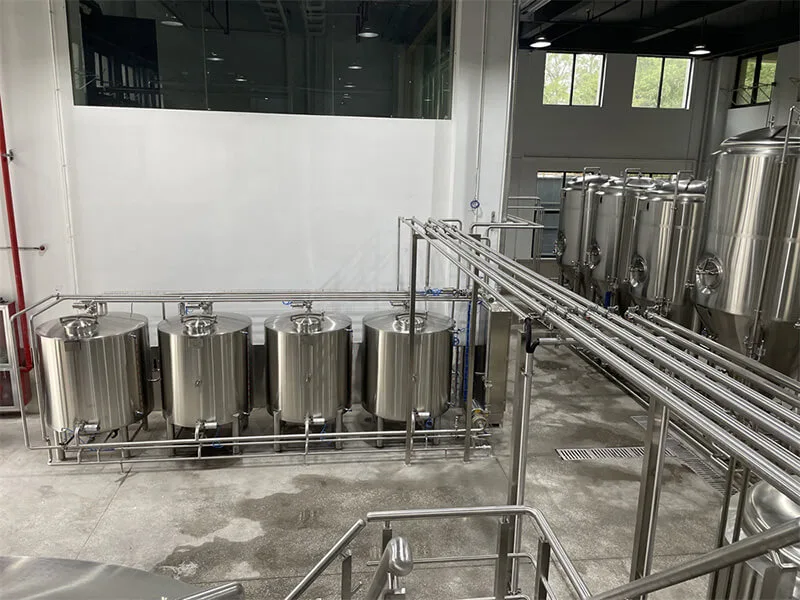
👉 Interested in learning more about professional brweing equipment, technical details, or pricing? Contact us today to discuss customized solutions for your production needs.

